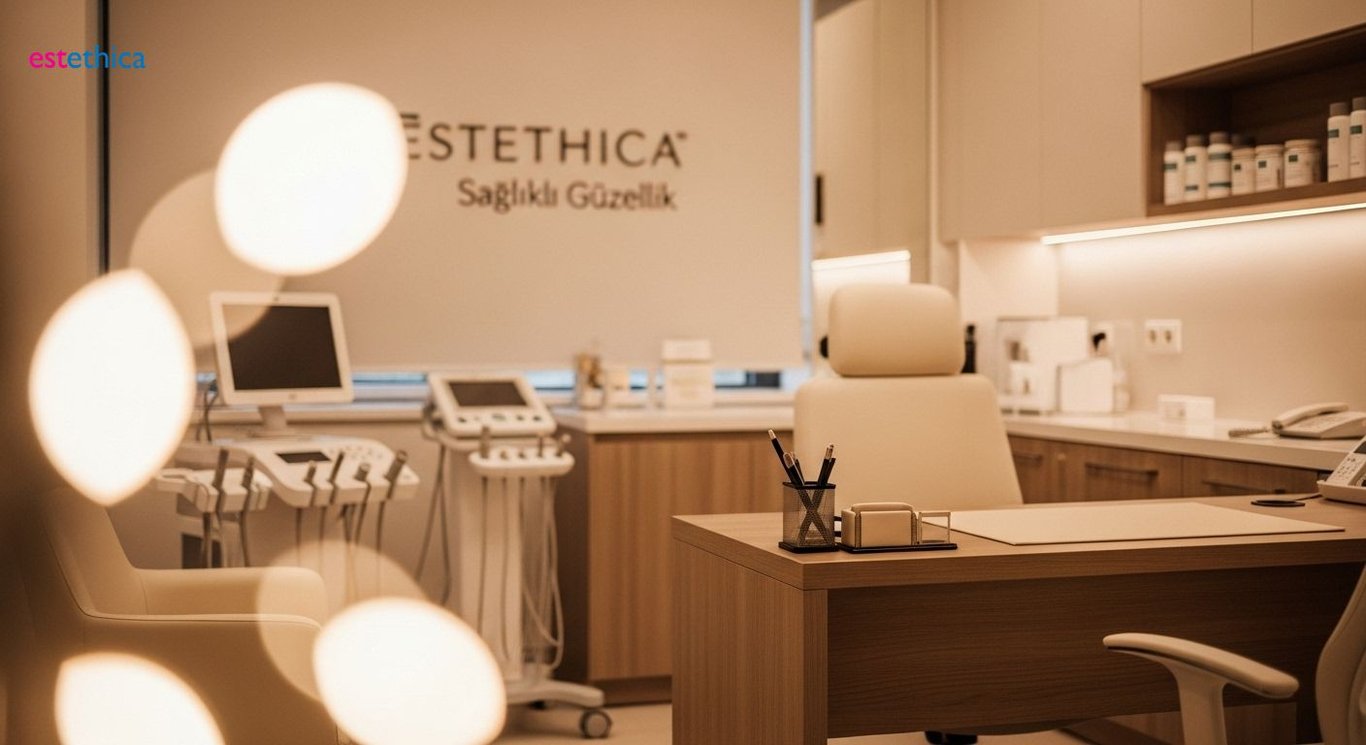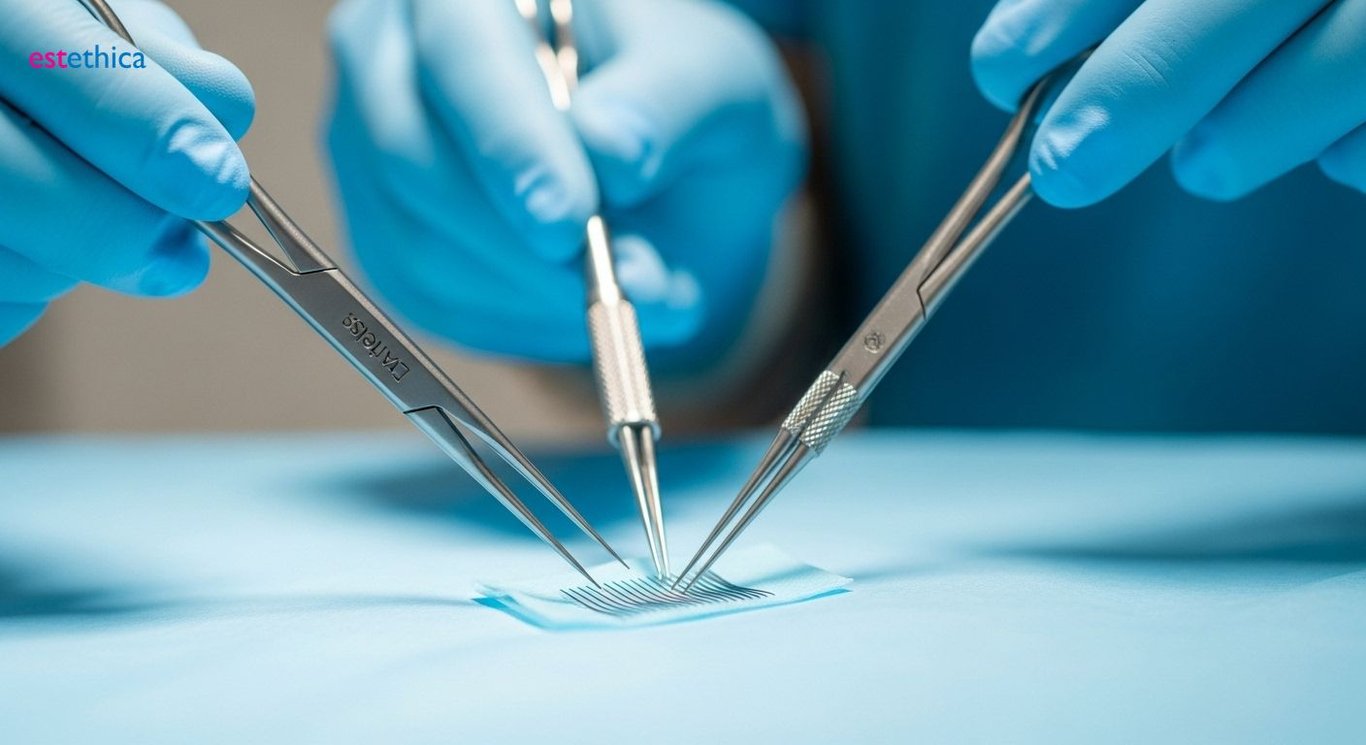Beard Restoration: Crafting the Perfect Facial Hair Transformation
Achieve your dream beard with modern restoration techniques. Discover FUE and more for natural-looking results.
Unlock Your Dream Beard: A Guide to Modern Beard Restoration
In recent years, beard transplants have become an increasingly popular solution for men seeking to achieve fuller, natural-looking beards. This comprehensive guide explores the latest techniques, recovery tips, and inspiring transformation stories to help you decide if a beard restoration is right for you.
Beard Transplant Techniques: FUE and Beyond
Understanding Follicular Unit Extraction for Beard Restoration
FUE (Follicular Unit Extraction) is a popular method used in beard transplants. This technique involves extracting individual hair follicles from a donor area and implanting them into the beard area. FUE offers natural results with minimal scarring, making it a top choice for many seeking beard restoration. The precision of FUE allows surgeons to carefully select and place follicles, ensuring a seamless blend with existing facial hair. This method is favored for its ability to achieve a fuller, more natural-looking beard without the extensive scarring associated with older techniques. For instance, a person with patchy beard growth can achieve a uniformly dense beard using FUE.
Ideal Candidates for FUE Beard Transplants
- Individuals with patchy or thin beard growth looking for facial hair transplant options.
- Those who desire a more defined beard shape and improved facial aesthetics through beard hair implants.
- Patients seeking minimal scarring and faster recovery times compared to traditional transplant methods.
FUE is particularly beneficial for those who want to maintain a short beard style, as the tiny scars are virtually undetectable. According to experts, FUE success often hinges on the surgeon's skill and the quality of the donor hair. A well-executed FUE procedure can dramatically enhance a man's appearance and confidence. For example, someone with a naturally sparse beard can achieve a thick, full beard, enhancing facial symmetry and overall appeal.
The FUE Procedure Step-by-Step
- Extraction: Individual hair follicles are carefully extracted from the donor area, typically the back of the scalp, using a specialized micro-punch tool.
- Preparation: The extracted follicles are then prepared under a microscope, ensuring they are healthy and ready for implantation.
- Implantation: The prepared follicles are strategically implanted into the recipient area on the face, following the natural hair growth pattern to achieve a natural look.
Each step of the FUE process is crucial to achieving optimal results. The surgeon's precision and artistry play a significant role in ensuring the transplanted beard looks natural and complements the patient's facial features. Understanding this process helps set realistic expectations for the outcome of the follicular unit extraction beard.

Facial Hair Transplant: Achieving Natural-Looking Results
The Role of Hairline Design in Achieving a Natural Look
A crucial element in achieving a natural-looking beard transplant is the design of the hairline. The hairline's shape, density, and position significantly influence the overall aesthetic. Skilled surgeons meticulously plan the hairline to ensure it complements the patient's facial features and age. Factors such as the natural curvature and symmetry are carefully considered to avoid an artificial or unnatural appearance. Attention to detail in hairline design is paramount for a seamless integration with existing facial hair, contributing to a more authentic and aesthetically pleasing outcome. The follicular unit extraction beard procedure is a perfect treatment for the natural look.
Key Considerations for a Natural-Looking Beard Restoration
- Natural Angulation: Ensuring that the transplanted hairs are angled correctly to mimic the growth pattern of existing facial hair.
- Density Gradient: Creating a gradual increase in density from the edges of the beard towards the center for a more natural transition.
- Irregularity: Incorporating slight irregularities in the hairline and density to replicate the natural asymmetry found in real beards.
Expert practitioners understand that the key to a successful facial hair transplant lies not only in the technical execution, but also in the artistic planning and design. A well-designed and executed beard transplant can significantly enhance a man's appearance, giving him a more confident and masculine look. Paying close attention to every detail ensures that the final result blends seamlessly with the patient's natural features. For instance, careful placement of individual hair implants along the jawline can create a more sculpted and defined look that looks completely natural.
Achieving Natural Results: Step-by-Step Guide
- Initial Consultation: Comprehensive assessment of facial features and desired outcome.
- Customized Hairline Design: Creating a personalized hairline plan based on individual facial structure.
- Precise Follicle Placement: Strategic hair implants to ensure natural hair direction and density.
Each stage in the beard restoration process contributes to the overall success and naturalness of the results. The attention to detail and personalized approach are essential for creating a beard that not only looks good but also feels authentic. The techniques of beard transplant offer a variety of approaches to give hair implants for the patients.

Beard Restoration: Before & After Transformation Stories
Witnessing the Impact of Beard Restoration
Seeing real-life transformations can provide the assurance needed to proceed with a beard transplant. Before and after photos showcase significant improvements and how natural the results look weeks after the procedure. These visual examples highlight the potential for enhanced facial aesthetics and increased confidence through beard transplants. Reviewing these images can help individuals envision their own potential results, setting realistic expectations for the outcome. A sparse or patchy beard can be completely transformed, leading to a fuller, more defined look. For example, someone with minimal facial hair might achieve a robust, masculine beard, drastically altering their appearance.
Benefits of Reviewing Before & After Photos
- Visual Assurance: Provides tangible evidence of the potential cosmetic benefits that individuals can achieve.
- Realistic Expectations: Helps individuals understand what is achievable, guiding their decisions about pursuing beard restoration.
- Enhanced Confidence: Supports informed decision-making through visible examples of successful beard hair implants.
Before and after photos also serve as a testament to the surgeon's skill and the effectiveness of the chosen technique, such as follicular unit extraction beard. Detailed examination of these photos often reveals the subtlety and artistry involved in creating a natural-looking beard. Understanding these elements boosts the confidence of prospective patients. For instance, the transformation from a thin, uneven beard to a thick, well-groomed one can dramatically improve facial symmetry and aesthetic appeal.
Key Phases in Beard Transplant Recovery
- Immediate Post-Op: Initial appearance and care instructions to promote healing.
- Early Growth Phase: Development of newly transplanted hair over the first few months.
- Mature Results: Full beard density and natural look achieved within a year.
Witnessing the journey from the initial procedure to the final outcome helps individuals mentally prepare for the process. Seeing how the beard evolves over time can be especially reassuring, highlighting the patience and care required to achieve optimal results. These transformations underscore why many choose beard restoration to enhance their overall appearance. For example, patients often celebrate fuller beards for holiday photos, feeling more confident and complete.

The Ultimate Guide to Beard Transplant Recovery and Care
Essential Steps for Optimizing Your Facial Hair Transplant Recovery
Successful recovery after a beard transplant is essential for achieving the best results. Following your surgeon’s detailed aftercare instructions is critical. This includes gentle cleaning of the transplanted area to prevent infection and promote healing. During this period, it's also important to avoid direct sunlight and harsh weather conditions, which can negatively impact the newly implanted follicles. Using recommended aftercare products helps soothe the skin and minimize scarring. Be sure to attend all scheduled follow-up appointments to monitor progress and address any concerns promptly. Adequate rest and a healthy lifestyle are key to a smooth recovery, ensuring the transplanted hair integrates well and grows naturally during the follicular unit extraction beard process.
Do’s and Don'ts Following Your Beard Transplant
- Do: Gently clean the transplanted area with a mild, recommended cleanser to avoid infection.
- Do: Apply prescribed ointments to keep the area moisturized and promote healing.
- Don't: Engage in strenuous activities or heavy lifting for at least two weeks to avoid disrupting the new hair follicles.
Post-operative care plays a crucial role in ensuring the longevity and appearance of your beard restoration. It also involves avoiding smoking and excessive alcohol, as these can impede blood flow and hinder the healing process. Protecting the transplanted area from trauma, such as rubbing or scratching, is also vital. Proper hydration and a balanced diet support overall health and hair growth, contributing to a fuller, healthier beard. By carefully adhering to these guidelines, patients can significantly improve the success rate and aesthetic outcome of their facial hair transplant. Consistency in aftercare ensures long-term satisfaction with the enhanced facial aesthetics from beard hair implants.
Timeline of Recovery After a Beard Transplant
- Week 1: Initial healing, gentle cleaning, and avoiding direct sunlight.
- Month 1-3: Shedding of transplanted hair followed by the emergence of new growth.
- Month 6-12: Full beard density and maturation of transplanted hair achieved.
Understanding the timeline helps patients remain patient and optimistic throughout the recovery. Each phase brings visible progress, but the final results take time to fully manifest. Regular communication with your surgeon is key to managing expectations and addressing any concerns that arise. Embracing the process and maintaining a proactive approach to aftercare leads to the best possible outcome. The journey of beard transplant can provide amazing results for people interested in the facial hair transplant procedure.
Transform Your Look: The Ultimate Beard Transplant Guide
Advanced FUE Techniques for Natural Beard Restoration
estethica employs Follicular Unit Extraction (FUE) for beard transplants, extracting individual hair follicles from donor areas and implanting them into the beard area. This meticulous approach ensures natural-looking results with minimal scarring, allowing surgeons to precisely select and place follicles for a seamless blend with existing facial hair.
estethica's surgeons possess extensive experience in facial aesthetics, specializing in beard hair implants using advanced FUE techniques. Their skill and precision are critical to achieving optimal outcomes, ensuring the transplanted beard complements the patient's facial features and desired look.
Comprehensive Recovery and Aftercare for Optimal Beard Transplant Results
estethica prioritizes patient safety and provides detailed aftercare instructions for beard transplant recovery, including gentle cleaning, avoiding sunlight, and using recommended products to minimize scarring. Scheduled follow-up appointments ensure progress is monitored, and any concerns are promptly addressed.
Real-life transformation stories showcase the impact of beard restoration, highlighting how natural the results look weeks after the procedure. These visual examples help individuals envision their potential outcomes and set realistic expectations for enhanced facial aesthetics and increased confidence.
Frequently Asked Questions
What is Follicular Unit Extraction (FUE) and how is it used in beard restoration?
How do surgeons ensure a natural-looking result with a beard transplant?
What can I expect during the recovery period after a beard transplant?
Who is an ideal candidate for a facial hair transplant using FUE?
Discover your path to healthy beauty with a personalized consultation from estethica's expert team.
📞 Schedule Your Free Consultation Now!